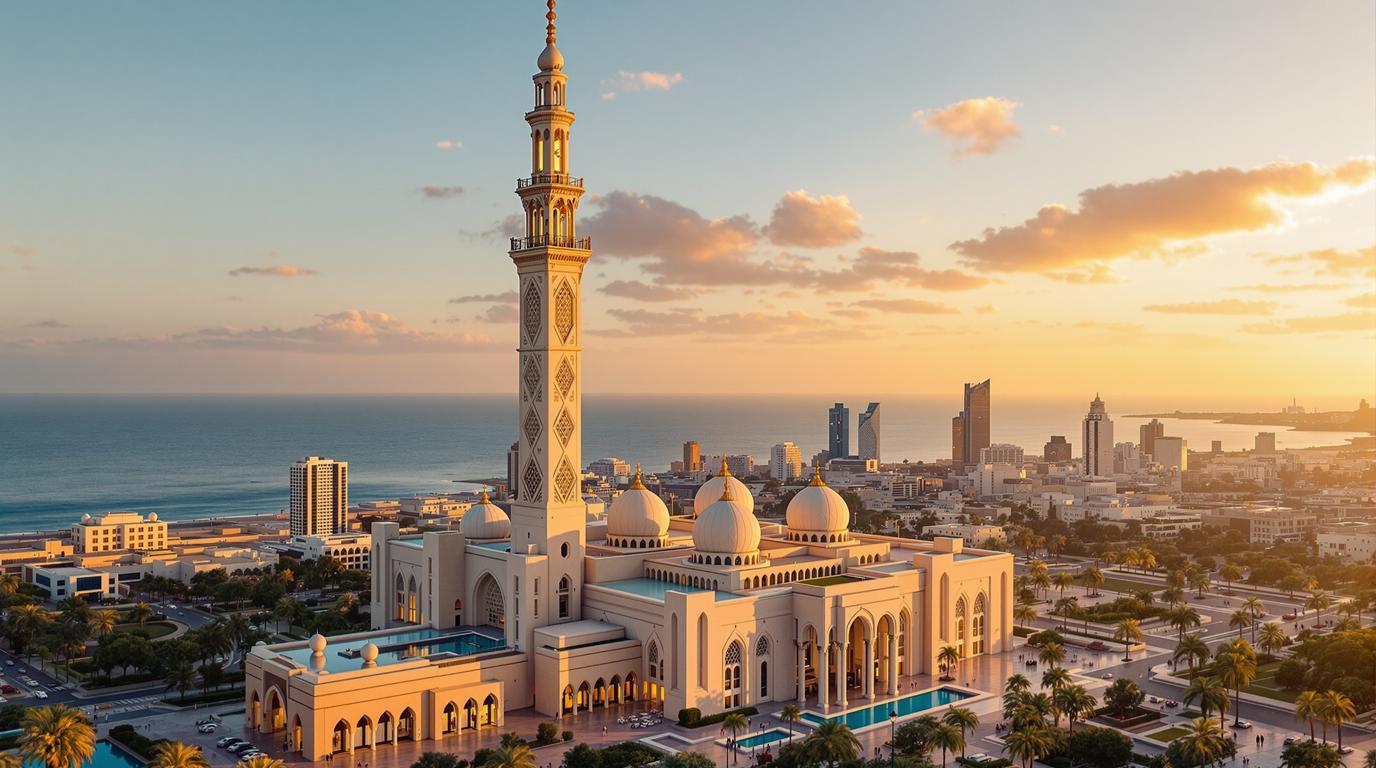Casablanca stuns visitors with its dramatic collision of old and new—a city where minarets pierce modern skylines and French colonial architecture stands alongside sleek skyscrapers. Morocco’s economic powerhouse isn’t just a stopover point but a destination that rewards the curious traveler with unexpected treasures.
The magnificent Hassan II Mosque: Where the ocean meets spiritual grandeur
Standing proudly on a promontory overlooking the Atlantic Ocean, the Hassan II Mosque commands attention with its staggering proportions. Built partially over water, this architectural marvel features the world’s tallest minaret at 689 feet and accommodates 25,000 worshippers inside with room for 80,000 more in its courtyards.
“The mosque represents our connection between earth and heaven, between Morocco and its faith,” explains local guide Hassan Benali. “When the Atlantic waves crash beneath the glass floor section during prayers, you feel the power of both nature and spirituality simultaneously.”
Unlike most Moroccan mosques, Hassan II welcomes non-Muslim visitors through guided tours, offering a rare glimpse into Islamic architectural brilliance with its hand-carved cedar ceilings, marble columns, and dazzling mosaic tilework.
Beyond the postcard: Casablanca’s hidden Art Deco treasures
While Marrakech and Fez attract visitors with their ancient medinas, Casablanca boasts the world’s largest collection of Art Deco architecture outside Europe. The city’s transformation during the French Protectorate (1912-1956) left behind stunning Mauresque buildings—a fascinating blend of Moroccan craftsmanship with European modernism.
Stroll down Boulevard Mohammed V to discover façades adorned with geometric patterns, ornate balconies, and striking curved corners. The Cinema Rialto and Café de France stand as perfect examples of this unique architectural heritage that tells the story of Casablanca’s cosmopolitan evolution.
The Corniche: Where locals escape the urban rhythm
When Casablancais need a break from city life, they head to La Corniche—the vibrant beachfront district stretching along the Atlantic coast. Here, luxury resorts and beach clubs neighbor casual seafood shacks, creating a democratized playground for all social classes.
For an authentic experience, join locals for a sunset stroll along the promenade, where families picnic, teenagers play soccer on the sand, and elderly men engage in intense backgammon matches. The ocean breeze offers welcome relief from the inland heat, especially during summer months.
Culinary adventures in Grand Casablanca
Casablanca’s food scene reflects its position as Morocco’s most international city. Begin your culinary exploration at the Central Market, where fishmongers display the Atlantic’s bounty alongside fruit vendors hawking plump dates and fragrant oranges.
For an unforgettable meal, head to La Sqala, a restaurant built within an 18th-century Portuguese fortress. Their seafood tagine combines the freshest catch with preserved lemons and olives—a perfect introduction to Moroccan coastal cuisine.
The Old Medina: A compact labyrinth of authenticity
Though smaller than its counterparts in other Moroccan cities, Casablanca’s Old Medina offers a more relaxed shopping experience. Wander through narrow alleyways where artisans craft leather goods, metalwork, and textiles using techniques passed down through generations.
“Our medina may not be the most beautiful in Morocco, but it’s real—not preserved for tourists,” says shopkeeper Fatima Zahra. “Here you see how urban Moroccans actually live and work today.”
Modern Casablanca: Africa’s Manhattan rises
For a glimpse of Morocco’s future, visit the ultramodern Casablanca Finance City and Morocco Mall—Africa’s largest shopping center complete with an aquarium and indoor ice skating rink. These developments symbolize Morocco’s ambition to become a financial hub connecting Europe, Africa, and the Middle East.
The contrast between these gleaming structures and the ancient medina creates a captivating urban landscape that feels almost otherworldly in its juxtapositions—not unlike finding a traditional spice market adjacent to a Starbucks.
Where Hollywood fantasy meets Moroccan reality
Despite what many believe, the classic film “Casablanca” wasn’t shot here at all. Nevertheless, entrepreneurs have capitalized on the connection with Rick’s Café, a meticulous recreation of the movie’s fictional nightspot. The piano player taking requests for “As Time Goes By” creates an irresistible atmosphere of nostalgic charm.
Located in an impeccably restored 1930s mansion, this establishment offers more than just movie references—it serves excellent Moroccan wine and hosts live jazz performances that would make Humphrey Bogart proud.
When to visit: Capturing Casablanca’s perfect moments
Spring (April-May) and fall (September-October) bring ideal temperatures for exploring this fascinating destination. The light during these seasons creates a magical glow on the white buildings that gave Casablanca (“White House”) its name.
Avoid July and August when humidity peaks and many businesses close as locals escape to cooler destinations. December offers festive holiday decorations that create an interesting contrast with Islamic architecture, though occasional rain showers can interrupt sightseeing plans.
Embracing Casablanca’s soul
Casablanca may lack the postcard perfection of other Moroccan destinations, but its authentic urban energy provides something more valuable—a genuine glimpse into contemporary Moroccan life. This is a city where tradition and innovation coexist in constant, vibrant dialogue, creating an atmosphere that feels simultaneously ancient and utterly new.
